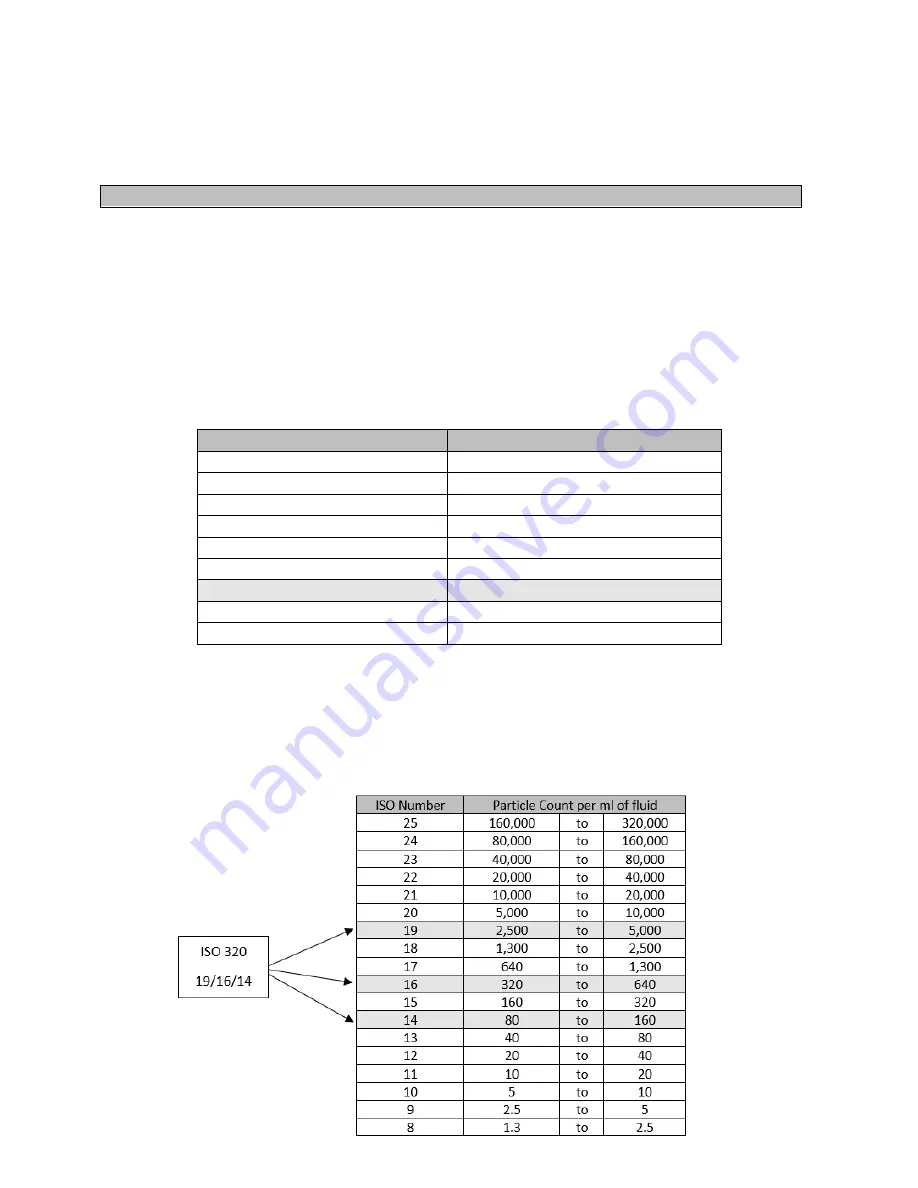
1235 Hickory Street; Pewaukee, WI 53072
For Customer Support: 800-558-7008
for safe usage. Check continuity before starting.) Always check with a safety engineer
when any question arises and periodically check safety procedures with a safety
engineer.
ISO Cleanliness Rating
Lubricating oils stored in bulk containers may contain contaminates. Ordinarily it has
been thought lubricants stored in drums prior to use were contaminant-free; however, it
has now been learned it is beneficial to filter lubricants even prior to its use as the
original container may impart impurities to the lubricants prior to its first use. Most
rotating equipment is manufactured to a class 2 or class 3 fit typical of most industrial
operations. Hydraulic components and rotary screw compressors tend to have tighter
tolerances in the sliding and rotating elements. Clearances in components are used to
establish cleanliness requirements. The best source for cleanliness requirements is
from the equipment manufacturer. In general, as the viscosity of the oil increases the
cleanliness level decreases. Below is a general guideline for cleanliness levels.
ISO Oil Grade Classification Cleanliness Code (R4/R6/R14)
32
16/14/11
46
16/14/11
68
17/14/12
100
18/15/13
150
18/15/13
220
19/16/14
320
19/16/14
460
19/16/14
680
20/18/14
Determining the ISO Cleanliness level of equipment requires analysis of the running
lubricating oil. Trico’s oil analysis laboratories can provide an accurate indication of the
ISO Cleanliness level of lubricating oil before and after filtration. Each number in the
ISO code represents the micron range of particulate in which the count lies within (R
4
microns
/ R
6
microns
/ R
14
microns
).
Example: 19/16/14, the 19 code shows that count of 4
micron particle lies between 5,000 and 2,500 per ml of fluid.
































